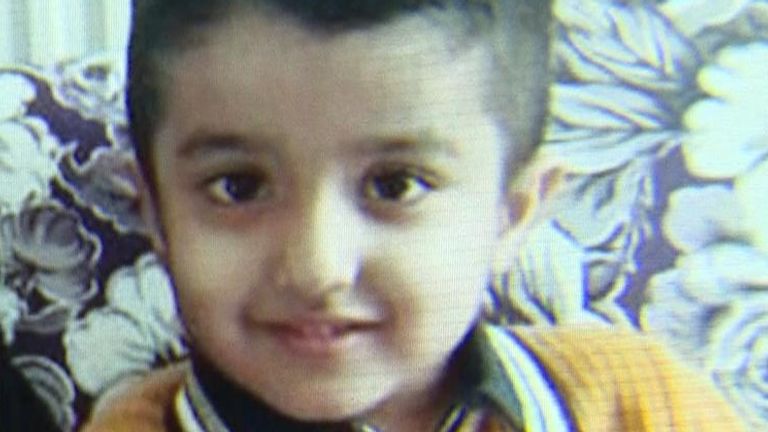Downing Street urges parents to ‘look out’ for Strep A symptoms after rise in cases | UK News
Downing Street has urged parents to be on the “lookout” for symptoms caused by Strep A infection after the death of at least six children.
As an invasive form of the Strep A bacterial infection has spread across the UK in recent months, officials have said that they can “fully understand” the concern parents are feeling about the rise in cases.
Reassuring that the NHS is “well prepared” for such situations, Number 10 added that it was not aware of any current shortage of the antibiotic amoxicillin, which is used to treat bacterial infections.
Addressing the recent rise in cases, the prime minister’s official spokesperson said: “We are seeing a higher number of cases of Group A strep this year compared to usual.
“The bacteria we know causes a mild infection which is easily treated with antibiotics and in rare circumstances it can get into the bloodstream and cause serious illness.
“It is still uncommon but it’s important parents are on the lookout for symptoms. But the NHS is well prepared to deal with situations like this, working with the UK Health Security Agency.”
The spokesperson went on to say that “well-established procedures” similar to ones implemented during the COVID pandemic to deal with, and prevent, any medication shortages are in place.
When asked how worried parents should be about the recent outbreak, Education Secretary Gillian Keegan added: “The first thing to say is it is extremely rare and there’s a very small number of cases.
“But of course, our heartfelt condolences go to the small number of parents who have lost a child through Strep A.
“The most important thing is to keep vigilant for the symptoms. So sore throat, fever, a rash. If you have any concerns, call 111. But we are monitoring the situation and working with the public authorities.
“If you have any concerns, pick up the phone and call 111.”
Baroness Sal Brinton was due to ask the government today what assessment it has made of its guidance to doctors and to parents in light of the increase in Strep A, iGAS and scarlet fever cases, after the Lord Speaker granted her a Private Notice Question.
Read more:
What are the symptoms of Strep A?
Why the spate of deaths now?
Illnesses caused by the Strep A bacteria include the skin infection impetigo, scarlet fever and strep throat. Compared to the week of November 14 to 20 in previous years, cases of scarlet fever have jumped to 851, compared to an average of 186.
Symptoms of scarlet fever, according to the NHS, typically take two to five days to appear following infection and can include a pinkish or red “sandpapery” body rash, swollen neck glands, sore throat, headache, and fever.
Grieving mother of four-year-old Muhammad Ibrahim Ali, who died in an ambulance on the way to hospital in High Wycombe, Buckinghamshire, said that her young son’s first symptoms included a red rash across his lower back.
Even after a full-course of antibiotics, his symptoms persisted and his mother began to give him Calpol. A week after his death, his post-mortem test results showed he had Strep A in his blood.
Infections of Strep A rarely develop into a more serious invasive infection known as iGAS, but they have increased this year, particularly in those under the age of 10.
Treatment with antibiotics can prevent serious illness and the spread of infection.
Microbiologist Dr Simon Clarke, from the University of Reading, said he wasn’t aware of any evidence of a new strain but suggested that a “drop in population-wide immunity,” as a result of children not mixing during the COVID pandemic “could increase transmission”.
He added that although cases didn’t appear to be linked, he believes “further cases over the coming weeks and months” are likely.

